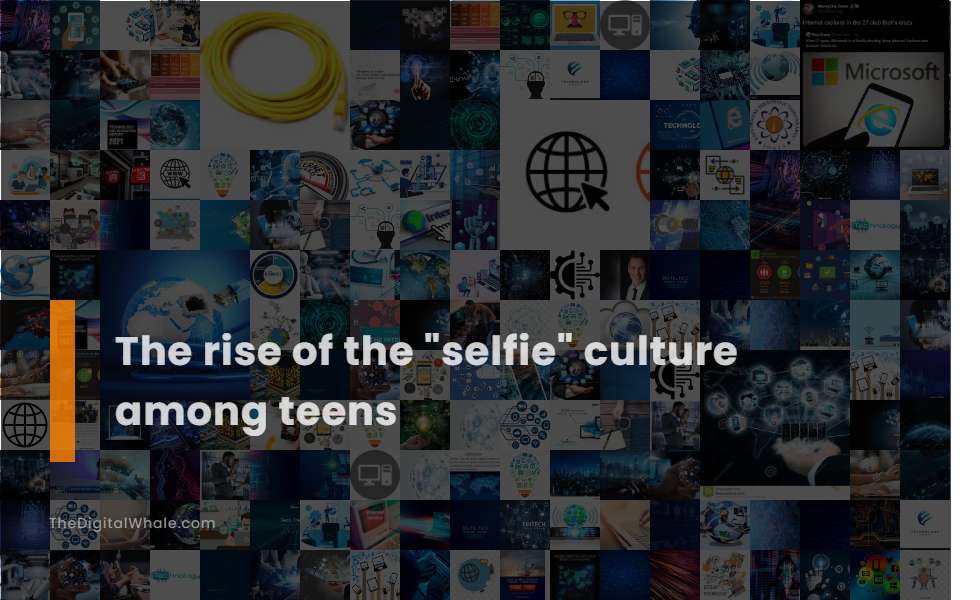The Rise of the Selfie Culture Among Teens
What is selfie culture? What causes a rise in eating disorders among teenagers? Let's find out more about The Rise of the Selfie Culture Among Teens.

Social media use among teens is ubiquitous, with nearly 80% having at least one social media account by age 13.
Social media use among teens is ubiquitous, with roughly three quarters of American teenagers being active members of more than one social network site, where they engage in self-presentation and identity exploration by sharing personal information and digital artifacts. This online activity is a significant part of their identity formation and self-concept development, reflecting their developmental drive to form and express their identities. For more insights on this subject, the study available at Core provides an in-depth analysis of how digital interactions shape adolescent identities.
Teens spend approximately five hours a week on social media, scrolling, posting, and interacting.
Teens spend approximately five hours a week on social media, engaging in activities such as scrolling through feeds, posting pictures, and interacting with other users, which is associated with a heightened awareness and negative perceptions of their body image, particularly for those focused on others' approval and adolescent girls facing societal beauty pressures. A recent study highlighted on the University of Kentucky's website reveals how such interactions can negatively affect the self-esteem and body image of teenagers, emphasizing the critical impact of societal pressures on young individuals.
Posting more pictures on social media is associated with heightened awareness and negative thoughts about one's body.
Posting more pictures on social media, particularly selfies, is associated with heightened body surveillance and negative thoughts about one's body, especially among adolescents with lower self-esteem, as it fosters a cycle of social comparison and self-scrutiny. The frequent posting of selfies on social media is linked to increased symptoms of body dysmorphia and negative body image among teenagers. These platforms often present curated and unrealistic beauty standards that influence self-perception. A study detailed on PsyPost unravels the impact of social media on adolescent girls, highlighting these significant psychological effects.
Adolescent girls and boys who focus on others for approval are more at risk for negative body image effects from social media.
Adolescent girls and boys who focus on others for approval are more at risk for negative body image effects from social media. Girls are particularly vulnerable to societal pressures and heightened awareness of their appearance, leading to more negative body image and lower self-esteem. The insights from a recent study highlight the critical need for awareness and strategies to mitigate these harmful impacts.
Body surveillance and social comparison are key factors in how teens perceive their physical selves on social media.
The rise of the "selfie" culture among teens is heavily influenced by body surveillance and social comparison, where constant interaction with social media platforms like YouTube and TikTok leads to increased social comparison and access to idealized images of peers and influencers, negatively impacting body image and self-perception. Excessive exposure to social media among teens is strongly associated with body image distortion, unhealthy weight control behaviors, and increased risk of body dysmorphic disorders, as teens compare their physical selves to the often digitally enhanced images of others online. To explore further, the Digital Wellness Lab delves into the intricate dynamics between social media use and body image issues among the youth.
Related:
What are some social media prevention strategies for parents around social media use by their teenagers? How do you feel about social media and romantic relationships? Let's find out more about The Impact of Social Media On Teen Relationships.
Self-esteem acts as a moderator in the relationship between social comparison, body surveillance, and selfie posting among teens.
Self-Esteem acts as a moderator in the relationship between social comparison, body surveillance, and selfie posting among teens. The study, presented on PsyPost, reveals that the impact of body surveillance on selfie behaviors is significantly stronger among adolescents with lower self-esteem. This insight highlights the critical role self-esteem plays in how young individuals engage with social media and perceive themselves in the digital age.
Girls are more likely than boys to post selfies, with six-in-ten girls reporting they often or sometimes do this.
Girls are more likely than boys to post selfies, with females posting an average of five selfies a month compared to two selfies by males. This behavior is often driven by intimidatory self-presentation strategies, particularly among females, who use selfies to project a powerful and aggressive personality online. For more insights, visit the Swansea University website.
Black teens are more likely than white teens to regularly share selfies and post content they want to go viral.
Black teens are more likely to use social media platforms like Instagram and Snapchat, where they frequently share content, including selfies, and report higher engagement rates compared to their white peers, driven by the need to express themselves and connect with others of similar identities and backgrounds. According to a report by AP NORC, black teens are the most active on social media and messaging apps, using platforms like Snapchat and Instagram more frequently than white teens, which includes regularly sharing content such as selfies and participating in video chatting and live streaming.
Social media can lead to feelings of overwhelm, pressure to present a perfect image, and negative impacts on self-esteem among teens.
The rise of Selfie Culture among teens is associated with negative outcomes, including heightened awareness and negative feelings about their body, particularly for those seeking approval from others and adolescent girls facing societal beauty pressures. Social media's impact on teens, especially adolescent girls, involves body surveillance and social comparison, leading to increased selfie posting and exacerbated body dissatisfaction and lower self-esteem. This highlights the complex dynamics of social media on mental health and self-perception.
The act of taking and sharing selfies can exacerbate body dissatisfaction and negative mood among adolescents.
The act of taking and sharing selfies can exacerbate body dissatisfaction and negative mood among adolescents by fostering a culture of comparison, perfectionism, and self-objectification. This is particularly concerning as it can worsen self-esteem, anxiety, and depression among teens, especially those already struggling with these issues. According to studies and insights shared by Child Mind Institute, selfies are linked to higher levels of body dissatisfaction, self-objectification, and lower self-esteem among young women. This is because the process often involves selecting, editing, and posting images that meet unrealistic beauty standards, further reinforcing negative body image and mood.
Related:
What are the effects of social media on teenagers? What are some social media platforms that adolescents use to receive positive feedback? Let's find out more about The Role of Social Media In Teenage Self-Expression.
